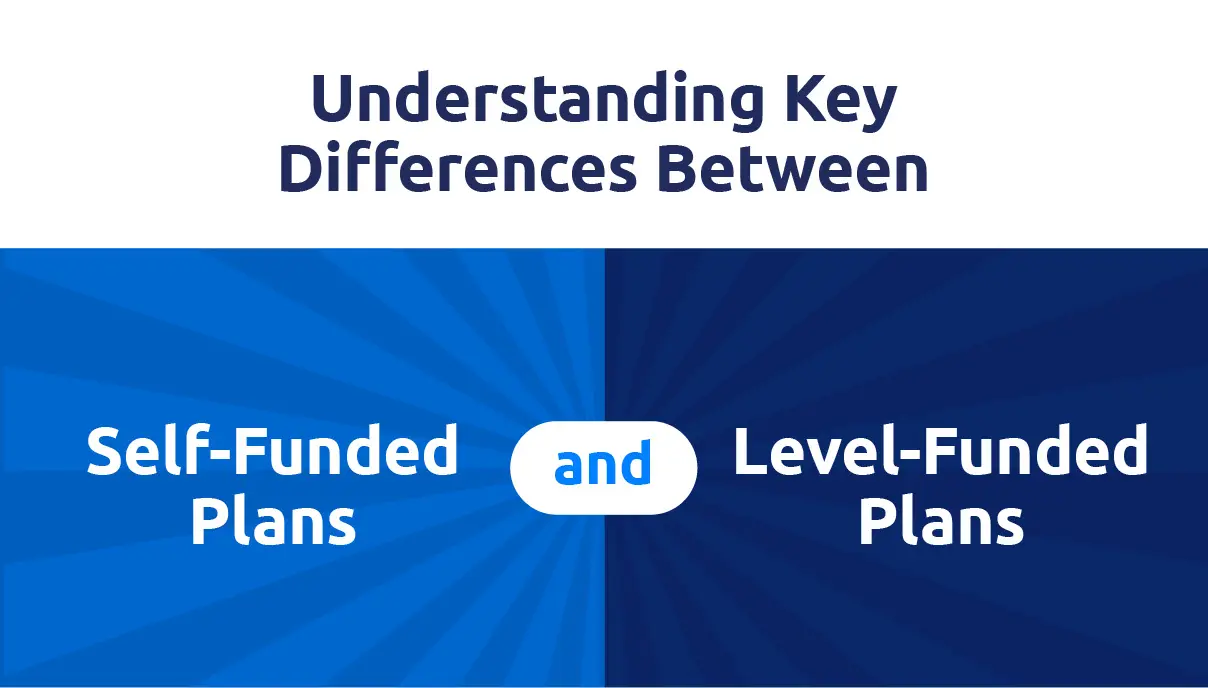Self-Funded vs. Level-Funded Plans: Which is Right for You?
Rising healthcare costs are prompting many employers to rethink how they fund their health benefits. Traditional fully insured plans may offer predictability, but they often come with steep premiums and little flexibility, leaving employers to foot the bill without much say in how the dollars are spent.
Enter self-funded and level-funded health plans: two alternative funding models that offer more control and the potential for significant savings.
Think of self-funding like building a fully custom home from the ground up with all the design details left up to you. Level-funding, on the other hand, is more like choosing a semi-custom home in a planned community. You still have choices, but the structure is more predictable and ready to go.
What Is a Self-Funded Health Plan?
A self-funded health plan gives the employer full ownership of the “blueprints.” Employers take on the financial responsibility for their employees’ healthcare claims, paying them as they occur. Rather than paying a traditional insurer, you partner with a third-party administrator (TPA), like Aither Health, to administer the plan, process claims, manage vendors, and provide data and reporting.
To protect against unexpectedly high claims, most self-funded employers purchase stop-loss insurance, which reimburses the plan for claims that exceed a certain threshold.
Why employers choose self-funding:
- Full control over plan design and vendor selection
- Access to real-time data and cost drivers
- Potential for long-term savings through smarter benefit design and risk management
It’s a model best suited for employers who want maximum flexibility and are ready to take ownership of their healthcare strategy.
What Is a Level-Funded Health Plan?
Level-funding offers a hybrid approach. It blends the stability of a fully insured plan with the cost-saving potential of a self-funded model. Employers pay a fixed monthly rate that covers claims funding, stop-loss insurance, and administrative fees. Claims are still paid from the employer’s fund, but payments are “leveled out” across the year to create predictability.
Also, if a group’s claims come in lower than expected, the employer may get a portion of the unused claims fund back at year’s end.
Why employers choose level-funding:
- Predictable monthly costs with no large surprise bills
- Upside potential in the form of shared savings
- Simplified administration that’s easy to budget and manage
It’s like choosing a home with a finished floor plan; you know what to expect, but you can still make it your own.
How Aither Health Supports Both Models
As a full-service TPA, Aither works with employers of all sizes to administer, optimize, and elevate their self-funded and level-funded health plans.
Whether you're laying the groundwork for a long-term strategy or testing the waters with level-funding, we’re with you every step of the way.
Here are a few key questions to help you determine which model is right for your organization:
- How large is your group, and how stable is your cash flow?
Larger groups often have more flexibility to self-fund, while level-funding may be ideal for mid-sized employers who want predictability. - What is your appetite for risk?
Self-funding comes with more variability, along with more opportunity. Level-funding smooths that risk while preserving some savings potential. - How much control and customization do you want?
If tailoring every detail matters, self-funding wins. If simplicity and efficiency are your goals, level-funding may be a better fit. - Are data transparency and long-term cost containment important to you?
Both models offer better insight than fully insured plans, but self-funding offers the most complete picture and room for optimization.
Choosing between self-funded and level-funded health plans is a strategic decision, but you don’t have to make it alone. At Aither Health, we help employers build smarter benefits from the ground up, no matter where they are in their journey.

